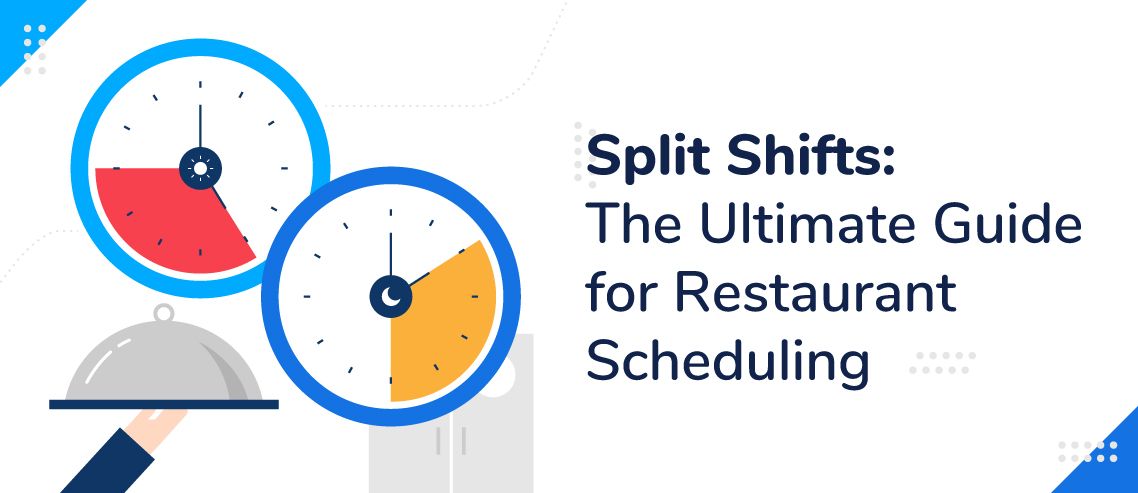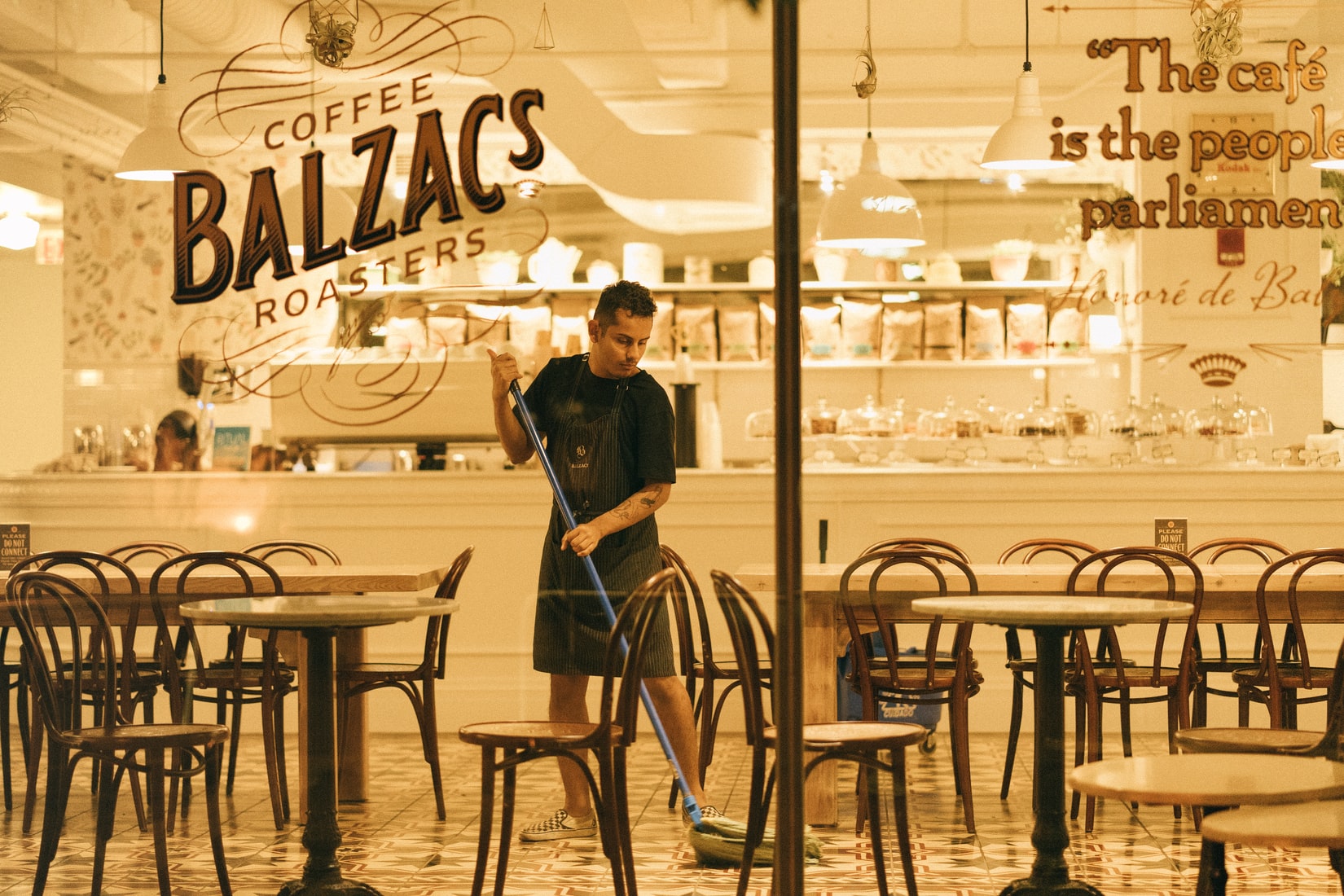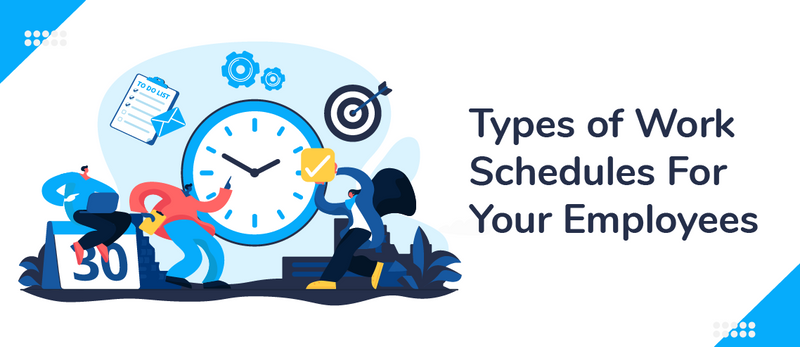Split Shifts: The Ultimate Guide for Restaurant Scheduling

The infamous 9-5 shift dominates the American work shift schedule and has for decades. Yet, more and more companies are expanding their arsenal to include flex work schedules and even split shifts.
Flexibility in your schedule often improves work-life balance, which tends to increase productivity, happiness, and overall engagement. It also helps to lower absenteeism and feelings of burnout.
Employees are increasingly calling for flexibility in their work schedules, and as a result, irregular shift work has skyrocketed in popularity in recent years. As many as 16% of workers stated that they now work non-day time schedules, and another 10% state that they are on a split shift, rotating shift, or some other form of irregular schedule.
Let’s take a closer look at the pros and cons of split shifts for restaurant scheduling:
What Are Split Shifts?
Split shifts are normal working shifts that are disrupted by an extended unpaid break somewhere during the shift.
This isn’t a normal fifteen-minute break or hour-long lunch – we’re talking about multiple hours off the clock in the middle of your shift.
Here’s an example of a split shift in action:
Your restaurant is busiest at lunch and dinner. On a split shift, you may work from 11 AM to 2 PM and take an extended unpaid break until 5 PM, at which time you’d return to work until you clock out at 10 PM.
Technically, you got your eight hours in, but there’s a large gap in the middle where you’re not getting paid.
What Are the Pros of Split Shifts?
Split shifts are especially lucrative to employers since the restaurant is not paying staff to stand around doing nothing during non-peak hours. They get a full staff that’s rested and ready to go for all the busy shifts and are simultaneously able to keep labor costs in check.
Research shows that long hours tend to backfire on employers as they can cause heightened stress levels, which can in turn lead to health problems such as diabetes, depression, impaired memory, and poor sleep. Not to mention an increased rate of turnover, absenteeism, and rising health insurance costs.
Some proponents of the split shift love the concept because they can get what the Spanish call a “siesta,” or an afternoon nap, before returning to a busy dinner rush. In Spain, it’s common for employees to start their workday at 9 AM, take a two-hour lunch break between 2 and 4 PM, then return to work and end their day around 8 PM.
With a split shift schedule, some take it a step further and run errands or pick up their kids during their off time. This arrangement is beneficial to a healthy work-life balance, and it also allows employees the flexibility to get things done during the day without sacrificing their hours or pay.

What Are the Cons of Split Shifts?
In addition to the benefits of split shifts, there are some cons as well.
For example, this setup can mean that commute times for reps may increase. Commute times already occupy a significant portion of the restaurant staff’s non-work hours, and with a split shift, they’ll likely have to drive home and back to work again during their extended break. This alone could double their commute time and fuel and maintenance costs on their vehicle.
It’s especially cumbersome or even impossible if you’re using public transportation, which takes considerably longer to get to and from home and work.
Are There Any Legal Issues Regarding Split Shifts?
It’s always a good idea to check local, state, and federal laws prior to implementing a split shift schedule in your restaurant. The Federal Fair Labor Standards Act is another good resource.
New York and California, in particular, have more stringent laws regarding split-shifts because they require split-shift premiums. A split shift premium in California is one hour of the state minimum wage or the local minimum wage (whichever is greater).
To really cover your bases, you could consult with a labor lawyer who’s more familiar with the requirements in your area. To make sure that you’re completely covered, it’s wise to keep a meticulous record of all split-shift activity, including:
- Start and stop times
- Meal breaks
- Split shift break start and end times
- Total hours worked each shift
Rather than keeping manual records, it’s best to find an automated solution that keeps tracking on autopilot. ZoomShift, for example, is employee scheduling software built with restaurants in mind.
It provides a built-in time clock so your employees can clock in and out both at work and on the go. Its dashboards make it easy to see who’s missed a time punch, is running late, or is nearing overtime.
Are Split Shifts Right for Your Restaurant?
This answer depends on a number of factors, such as:
- Do your employees have a lengthy commute to work?
- Are you in a state free of strict rules around split shifts?
- Do you have large slow periods during the day?
- Do you have the technology in place to easily record split shifts?
- Are your employees asking for flexibility in their schedule?
If you find that the answers to most – or all – of these are yes, then split shifts might be the best scheduling decision you make all year. Make sure you’re using employee scheduling software like ZoomShift if you implement split shifts. That way, you can easily notify employees of their shifts and keep an accurate record of who’s working when.
Advantages of Split Shifts for Managers
For restaurant managers, split shifts let you schedule staff when they are most needed. For example, you can have more servers during lunch and dinner rushes and fewer during the slower mid-afternoon hours. This ensures you have enough hands on deck when the restaurant is busy.
Split shifts also keep your team fresh and energized. Employees can rest, run errands, or take care of their personal matters during their breaks, so they come back to work ready to give their best.
Finally, split shifts help you attract and retain top talent. The flexibility they provide makes your restaurant a more appealing place to work, helping you recruit the best employees.
Advantages of Split Shifts for Employees
For employees, split shifts offer a long break in the middle of the day. This can be a great time to rest, run personal errands, or spend time with family.
It also means employees don’t have to fit everything into their weekends and can manage their personal and work lives better.
Another benefit is avoiding the rush hours. Employees can come to work and leave during off-peak hours, which saves time, fuel, and energy.
For example, if the split shift for a team member is from 11 AM to 2 PM and then 5 PM to 10 PM, they would be coming and leaving before or after the typical rush hours.
Split shifts can also mean better tips for servers and bartenders! Working the lunch and dinner rushes—when the restaurant is the busiest—can lead to more tables and higher tips.
Compared to someone working only a morning shift, when it’s usually quieter, split shifts allow your employees to capitalize on the peak dining times.
Tips for Working With Split Shifts in Your Business
Here are five tips to keep in mind when introducing split shifts to your team:
- Ask software for help: A good employee scheduling tool like ZoomShift simplifies the scheduling process, helps avoid conflicts, and ensures that you always have the right number of staff during peak times.
- Communicate clearly with your team: Keep your employees informed about their schedules well in advance. Clear communication helps everyone plan their personal lives around their work shifts and reduces confusion or last-minute changes.
- Track employee hours accurately: Have a reliable system for tracking employee hours. This ensures everyone is fairly compensated and helps you comply with labor laws. Accurate tracking also helps identify patterns and make future scheduling more efficient.
- Understand local labor laws: Your region may have specific regulations about work hours, breaks, and overtime. For example, some areas require a minimum amount of rest between shifts or mandate extra pay for split shifts.
- Consider commute time: Long or difficult commutes make split shifts challenging for staff, especially if they have to travel back and forth multiple times a day. If possible, schedule only those employees who live closer to the restaurant for split shifts or provide longer breaks between shifts to make the commute more manageable.
Are you leaning toward implementing split shifts? Why or why not? Tell us in the comments below:
JD enjoys teaching people how to use ZoomShift to save time spent on scheduling. He’s curious, likes learning new things everyday and playing the guitar (although it’s a work in progress).



